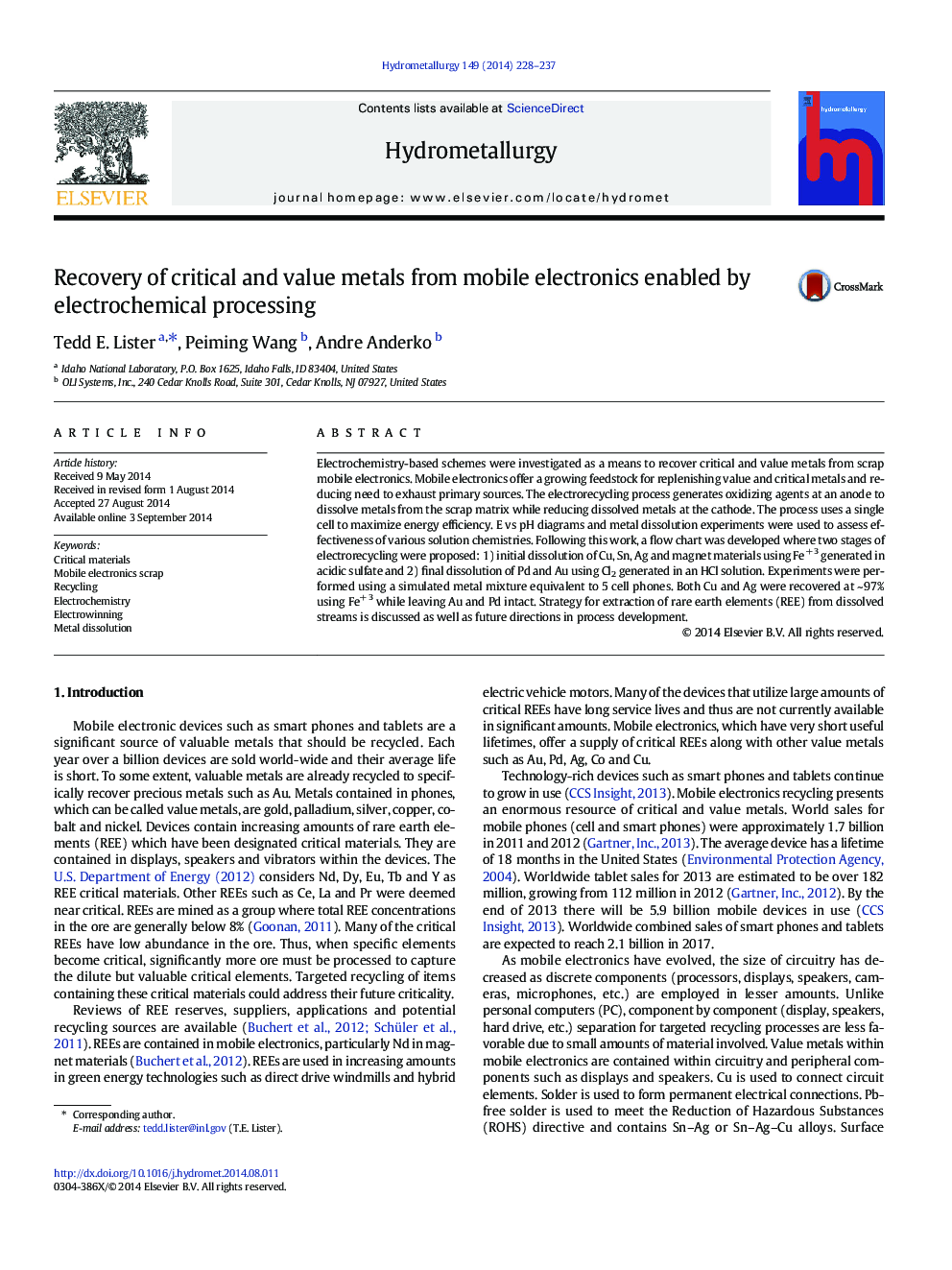| Article ID | Journal | Published Year | Pages | File Type |
|---|---|---|---|---|
| 212260 | Hydrometallurgy | 2014 | 10 Pages |
•Performed thermodynamic modeling of chemistry to assess dissolution conditions•Assessed electrogenerated oxidizers to determine dissolution rates•Developed recycling schemes based on determined rates•Performed experiments using surrogate metal mixture to evaluate process•Assessed formation of insoluble Sn(IV) from dissolved Sn(II)
Electrochemistry-based schemes were investigated as a means to recover critical and value metals from scrap mobile electronics. Mobile electronics offer a growing feedstock for replenishing value and critical metals and reducing need to exhaust primary sources. The electrorecycling process generates oxidizing agents at an anode to dissolve metals from the scrap matrix while reducing dissolved metals at the cathode. The process uses a single cell to maximize energy efficiency. E vs pH diagrams and metal dissolution experiments were used to assess effectiveness of various solution chemistries. Following this work, a flow chart was developed where two stages of electrorecycling were proposed: 1) initial dissolution of Cu, Sn, Ag and magnet materials using Fe+ 3 generated in acidic sulfate and 2) final dissolution of Pd and Au using Cl2 generated in an HCl solution. Experiments were performed using a simulated metal mixture equivalent to 5 cell phones. Both Cu and Ag were recovered at ~ 97% using Fe+ 3 while leaving Au and Pd intact. Strategy for extraction of rare earth elements (REE) from dissolved streams is discussed as well as future directions in process development.
Graphical abstractFigure optionsDownload full-size imageDownload as PowerPoint slide
